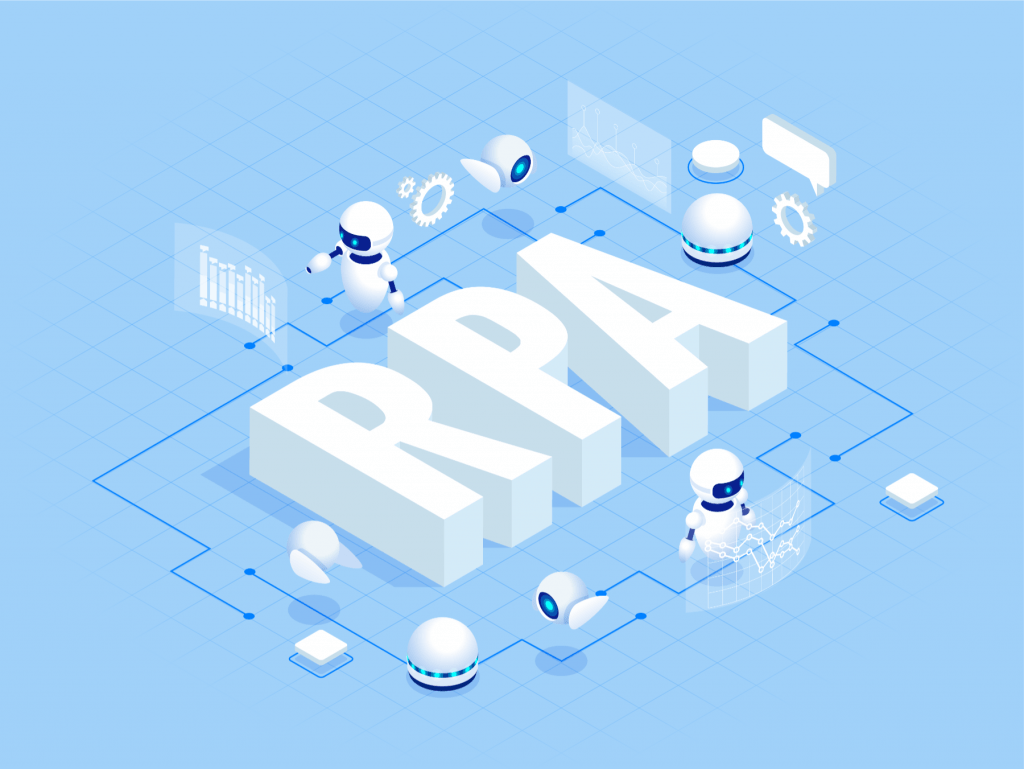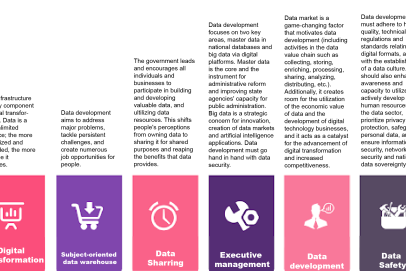Operation Optimization With IDP – A Case Study of An FMCG Corporation
The number of organization’s data and documents will keep on piling up, making it challenging for many businesses to manage effectively. Intelligent Document Processing has emerged as a vital technology for more accurate and efficient document processing. Due to its ability to streamline operations, the cutting-edge solution has a significant effect on various industries and business sectors.
Intelligent Document Processing – A booming trend of automation
Intelligent Document Processing (IDP) automates data collection, extraction, and processing from various formats (including structured, semi-structured, and unstructured data).
This technology is the next generation of automation, applying several advanced technologies, including Artificial Intelligence (AI), Natural Language Processing (NLP), Computer Vision, Machine Learning (ML), and Optical Character Recognition (OCR) to extend the scope of automation to even more sophisticated processes, enabling businesses to optimize operations more effectively.
IDP includes various crucial steps to capture and convert semi or unstructured data into usable data for easy handling. The critical stages of IDP include:
Document pre-processing:
IDP leverages several methods to improve data quality, such as noise removal, binarization, and deskewing.
- Binarization: The technique of converting any grayscale image into a black-and-white image.
- Deskewing: The process of removing skew by rotating an image by the same amount as its skew but in the opposite direction to improve data extraction results.
- Noise removal: The method to remove or reduce the noise from the image to make texts clearer to IDP.
The Computer vision algorithms in IDP are applied to recognize and analyze text fragments and images, both in digital and paper-based forms.
Data classification:
Integrate Natural Language Processing (NLP) to understand characters, symbols, letters, numbers, or text in unstructured documents. Using methods such as named entity recognition, sentiment analysis, and feature-based tagging, NLP can read data from multiple document characteristics, and IDP to classify context-based data into text and image documents.
Data extraction:
IDP uses Deep learning and Machine Learning-based OCR algorithms for data extraction. These algorithms are trained to recognize and extract specific information/fields from various formats, including names, dates, figures, etc.
Data validation:
IDP leverages a previously formatted database to validate data. At this stage, extracted data fields can be passed to a database to verify information. Then, any missing or incorrect data is corrected or flagged for human review.
Integration:
The final output is a structured data format that can be easily integrated into the enterprise’s existing systems, including the cloud platform or an internal database.
How does the IDP and RPA combination achieve greater value?
What is RPA?
Robotic Process Automation (RPA) is a technology that applies software bots to automate repetitive, time-consuming, and labor-intensive tasks by mimicking the way humans interact with software. Businesses commonly use RPA to automate order processing, invoicing, payment processing, order tracking, and various other time-consuming manual processes.
An RPA system must be capable of 3 factors: communicating with other systems to eliminate screens or integrate APIs, making decisions, and providing programming interfaces for bots. RPA is growing in popularity due to its ability to speed up manual tasks, freeing up human time for more complex and strategic work, and thereby boosting business efficiency.
Leveraging IDP & RPA to Enhance Document Processing
Although IDP and RPA perform their own functions, when they integrate, they can enhance their capabilities and strengths to facilitate a comprehensive document processing automation process.
RPA is considered the ultimate choice for tedious and rule-based tasks. As RPA operates at the interface layer of browsers and software, it can only handle structured data and standardized processes. Hence, to automate more complex tasks and processes, RPA needs complementary technologies. That’s when IDP comes into play. With the ability to deal with a massive amount of semi-structured and unstructured data, IDP can support RPA for data extraction and validation. Meanwhile, RPA is an effective IDP to automatically collect input data and deliver extracted data to required systems/places for an end-to-end automation process, limiting disruptions in the deployment process. The integration of these technologies can reduce manual data entry tasks by 80% and processing time in half.
When integrating IDP and RPA into the operations, businesses can enjoy numerous tangible benefits:
Enhance accuracy and data quality
With IDP and RPA combination, human errors associated with manual data entry are minimized, helping to achieve up to 99% accuracy and data quality.
Optimize resources
Implementing RPA and IDP can lead to a reduction in human resources and costs associated with errors, thus resulting in higher profitability and scalability.
Accelerate efficiency
With RPA and IDP integration, businesses can reduce the effort spent on tedious manual data processing while speeding up processing time. This leads to increased productivity and performance of employees since they can focus on higher-value tasks.
Improve regulatory compliance
Compliance with legal and regulatory standards is crucial to several industries, including banking and finance, healthcare, manufacturing, logistics, etc., With RPA and IDP synergy, businesses can have consistent and reliable data extraction and validation, ensuring adherence to regulatory requirements. This ensures risks of violating regulations are mitigated and penalties are avoided.
Expand document processing capabilities
As the business grows, the volume of documents and data is exponentially increasing. The manual methods often cannot efficiently scale to meet the needs of a growing business. However, with the advancement of IDP and RPA, this complex amount of data can be handled with ease without the need for significant additional resources.
Foster employee performance and satisfaction
The significant benefit of integrating the IDP and RPA into the business process is to eliminate the tedious and monotonous manual document processing that hinders employees’ efforts in leveraging their work. Therefore, employees are freed to do creative and strategic projects that help them upskill themselves with the industry trends.
Create undisrupted workflow and cohesive processing
RPA and IDP are a perfect match to reduce inadequacies and bottlenecks in the process. By integrating smoothly with the system, the two technologies are used to harness the power of automation, and completely automate document processing.
Which industries can take advantage of the IDP and RPA combination?
IDP and RPA collaboration can be applied in diverse businesses to streamline core business functions.
1. Banking
Banking organizations have to handle a large number of documents every day. The implementation of IDP and RPA can be effective in handling massive documents in the banking industry, including customer data, risk profiles of individual institutions, financial records, and financial applications.
2. Healthcare
Healthcare systems deal with multiple burdensome tasks and strict regulations that require a substantial amount of data processing. By leveraging the power of IDP and RPA, healthcare providers can significantly handle massive documents including electronic healthcare record documentation, claims, patient onboarding data, medical bills, medical records, and patient registrations, etc.
3. Retail
In the retail sector, several processes require accurate data processing. RPA and IDP solutions have integration capabilities enabling them to process data in the retail more effectively, including goods received notes, invoice receipts, customer data, etc.
4. Government
RPA and IDP can be used to accelerate the automation of scrapping the magnitude of data. It includes transferring and migrating data among government legacy systems, capturing data surveys for public sentiment analysis, processing data entry reports, letters, claims, and court records, extracting and validating driver’s license applications, passport applications, tax forms, healthcare, and insurance coverage records for timely handing.
Accelerate operation with IDP and RPA – A case study of an FMCG corporation
Overview of business
As a large organization operating in the FMCG industry with product distribution in more than 200 countries worldwide, the business needs to stay at the forefront of innovation to optimize operations with the requirement of seamless operation, high accuracy rate, time, and effort saving.
Challenges
- Heavy volumes of data come from more than 4000 orders per month. 90% of orders are formatted in different files (fax, email, EDI,..) and texts combine 5 different languages, making the processing more challenging than ever.
- High manual work and complicated process results in high errors, waste of time, and low productivity.
- High-performance employees are involved in document processing, which leads to the waste of human resources.
Solution
To deal with the data more efficiently and tackle business challenges, the organization has decided to opt for an IDP solution to automate data processing in an intelligent, flexible, and comprehensive way. The process includes ingestion, document classification, validation, data, and integration.
- Ingestion: Collect documents with different languages and formats
- Classification: Classify the documents by identifying the formats, structures, and document type
- Validation: The document is scanned locally, and properly identified with the entity. This step is crucial in detecting the inaccuracies of the extracted data
- Extraction: Extract documents as XML files
- Integration: Integrate documents with other business’s solution
Results
- 21,000 documents are processed effectively
- 4000+ pages in 5 different languages are handled
- 3 months to improve the business documents
To further achieve outstanding results, businesses can integrate RPA for automated data collection and data entry. By combining RPA with IDP, businesses can limit manual errors, increase accuracy, and optimize resources, allowing for comprehensive automation with limited bottlenecks and disruption.
Exclusive article by FPT IS Technology Expert
Le Nho Thuy
akaBot Technology Director
FPT Information System Company.














